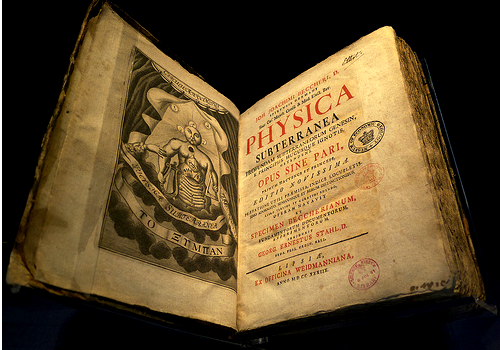Science Is Story: Science, Magic, and the Thin Line Between

Stories can impact the future. No one knows that better than science fiction authors, and writer-scientists. All week, leading up to our Interstellar Day of Science and Storytelling on Friday, May 8, we’re talking the power of story in science . Today, Dr. Anthony Francis, longtime Wrimo and computer scientist, shares why the line between magic and science is thinner than you’d think:
I write stories about magic: a magical tattoo artist who can bring her tattoos to life, a teenage girl who can change into a tiger, and fire magic based on mystic fuel distilled from the blood of dragons. At first blush, this seems as far from science as you can get—but I was trained as a scientist, and I can’t stop thinking that if magic was real, then magic would be real. Unless you’re writing fairy tales, magic should have real effects on the real world.
There’s no good scientific explanation of how a teenage girl could change into a tiger—but that doesn’t stop us from asking scientific questions. When can she change? How fast can she change? How much will she weigh? And if your teenage daughter changes into a tiger in the back seat of your Prius, will the car’s shocks take it? And that gives us a clue to the scientific method: a good scientist not only asks questions, they ask how the answers will interact with what they already know.
Science has made some amazing discoveries. When I tried to hypothesize where dragons might have come from, I learned about the Hadean Era—that time in Earth’s history where rock fell like rain and the oceans were made of lava. We discovered a scientific picture of that era from a sequence of simple steps: a geologist walking in a field, picking up a rock, making a note of a time and a place in a notebook—and then returning to the lab to figure out where that rock came from.
Often our first ideas are wrong, but by patiently fitting together what other geologists know about the Earth, and what astronomers know about the Moon, we can learn, for example, that an innocuous looking rock is actually a chunk of a meteorite that just might have been knocked off the surface of Mars.
That’s why, in every book of my series, I have my main character, Dakota Frost make at least one mistake—some snap judgment, based on her first read of the situation, which she slowly corrects through the methods of science. She observes what’s happening around her closely, takes notes, shares them with others, tries to put the puzzle together, and, when the pieces don’t fit, changes her mind—then tests her new ideas against new evidence. And that’s perhaps the most important part of science: you need to be willing to stick your neck out, to try out your ideas in places where you don’t yet have all the pieces—and to change your mind if you’re wrong.
Many think magic is impossible. But what we can do with science once seemed impossible. And in the Dakota Frost stories, I use magic to show the progress of science accelerated into dramatic action—to show, for example, Dakota starting off in a book not believing in magic teleportation, slowly realizing that she’s wrong, perfecting a model of how it works—and then using that knowledge to step through a magic graffiti doorway and save the life of her impossible weretiger daughter.

Dr. Anthony G. Francis, Jr. is a science fiction writer and computer scientist who started writing urban fantasy because he likes it. When not making computers smarter or writing science fiction and fantasy, Anthony blogs about his life, his writing and his research at The Library of Dresan. He currently lives in San Jose with his wife and cats.
Top photo by Flickr user Ania Mendrek.
Chris Baty's Blog
- Chris Baty's profile
- 63 followers



